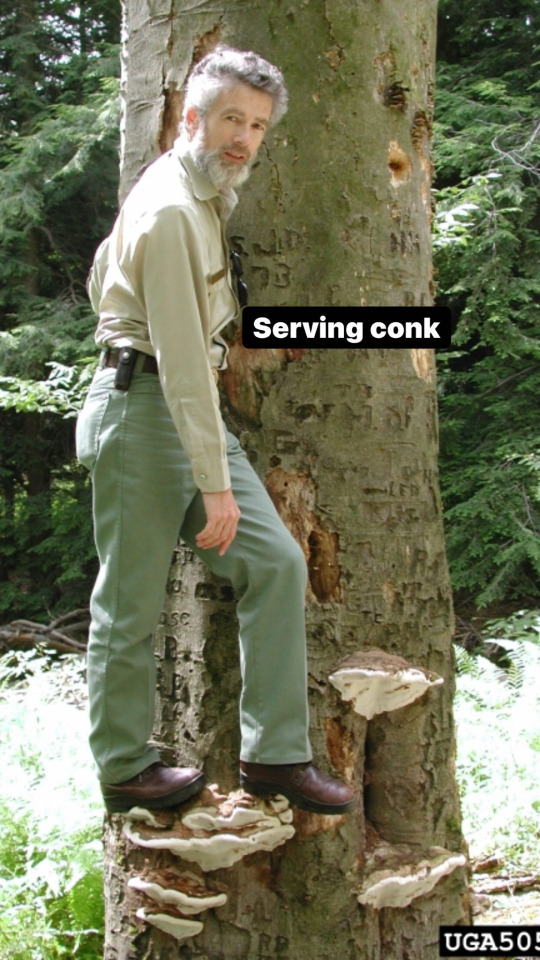Text
Teaching 5-year-olds about animal classification, fingernails dug into my palms, jaw clenched, just barely holding back telling them about how fish are fake fish are fake fish are fake
6K notes
·
View notes
Text
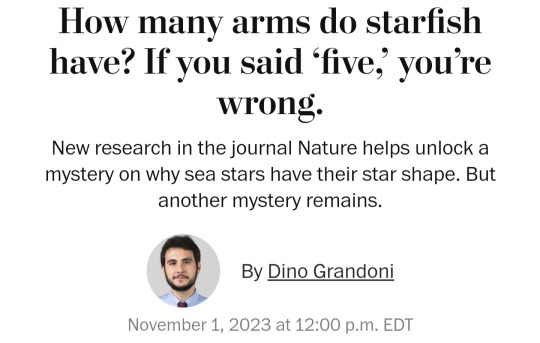

thanks so much to Thurston Lacalli from the University of Victoria in Canada for ruining my fucking night!
17K notes
·
View notes
Text
no holes, the hole(s) take up far more space than the physical object, and thus are empty space separate from the straw
I’m really into internet discourse but only pointless and stupid internet discourse like how many holes there are in a straw (it’s 2)
172K notes
·
View notes
Text
Food history has been so sanitized by the demonization of carbs. “Our ancestors only had fruits and veggies they didn’t have all these refined carbs” our ancestors drank beer 25/8 because the water was bad. Our ancestors drizzled honey on shit ever since we knew it existed. We’ve been making bread for our entire recorded history. It’s true that bleached sugars specifically are a new thing but high glycemic carbs are not new at all, we’ve been consuming them for thousands of years
78K notes
·
View notes
Text
Sudden wave of an immense love for humanity has hit me once again…
182K notes
·
View notes
Photo


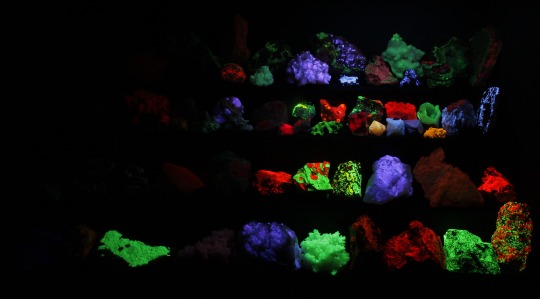
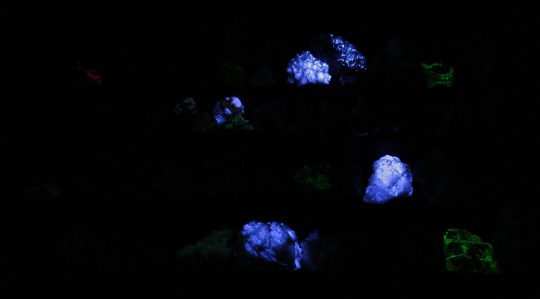


Fluorescent mineral display at the 65th Annual Dallas Gem & Mineral Society Show. Long wave ultraviolet on the left, short wave on the right. Pic 1 shows both the long wave and short wave UV lights on. Pic 2 shows just the long wave. Pic 3 shows just the short wave. Pic 4 shows the rocks after all the lights have been turned off. They glow in the dark! Pic 5 shows what they look like under regular, ordinary, boring white light. Pic 6 shows seven rocks that are tenebrescent. Can you find them?
500 notes
·
View notes
Text
I do wonder how polytheistic religions, before the emergence Monotheism, viewed other polytheistic religions in relation to their cosmology. If a follower of Old Norse religion visited Ancient India and experienced the cultural vastness of Dharmic religions, would they consider their cosmology to be invalid or would they try to fit their cosmology into their worldview.
360 notes
·
View notes
Text
I bet if a mushroom could lap water out of your hand with a tongue that a gently drinking mushroom tongue on your hand would be the softest and gentlest thing.
103K notes
·
View notes
Text
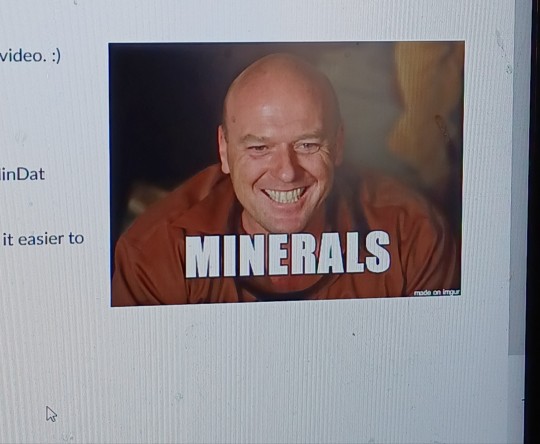
Opened up canvas to see what my geology professor has in store this week and this is on the first page of the module
16K notes
·
View notes
Text


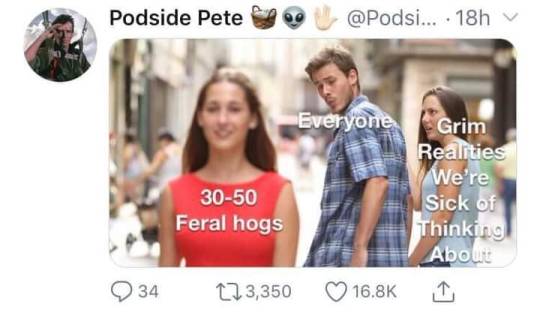







#ok but like#theres an episode of my fave podcast on this and its really interesting#its called reply all
90K notes
·
View notes
Text
My dad is a lung surgeon and the way he casually talks about his surgical tools is hilarious. He recently recorded a video to train some new instrumentalists and he was like "okay :) so here's the scalpel, different sized tweezers, the forceps, and the saw I use to crack open people's ribcages :)"
627 notes
·
View notes
Note
Hey, could you maybe tell us about Labradorite? I checked wiki but I don't understand half the words there. I'm not a giant rock fan, but I like cool rocks and Labradorite looks really cool. Sorry to bother you!
Okay, so, Labradorite. Labradorite is complicated and sciencey, as all good rocks are. I’ll see if I can explain it in a way that makes any sense! (Once again, I’m not a scientist! Correct me if I’m wrong!)
Most minerals, when they’re bright and pretty and colorful, look like that because while they were forming some impurities got mixed into them - usually metals like iron, copper, or titanium. Without any impurities, these rocks would naturally be colorless. We call these guys allochromatic (other-colored).

Other gemstones are certain colors because those elements are an important part of how they formed. They’re not impurities that got mixed in, they’re actually part of the gemstone. Their natural color IS the color you’re seeing. We call them idiochromatic (inherently colored).
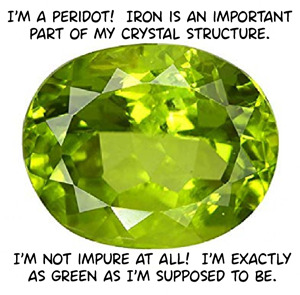
But labradorite doesn’t get its color from either of those things. Labradorite is special. It’s part of a third group: psudochromatic (false colored). These rocks aren’t colorful at all, but they LOOK that way when light passes through them.
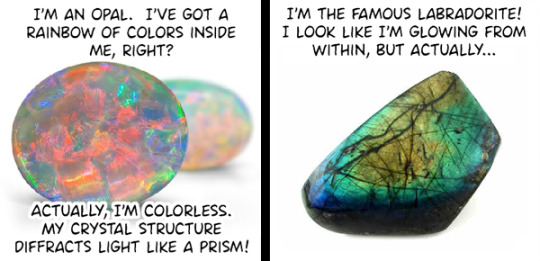
See, labradorite is actually just… grey. From most angles, it looks like this:

You have to look at labradorite from a pretty specific angle to get those flashy colors, so when we cut it into cabochons for jewelry, or just polish up big pieces of it, we’re careful to do so at the most flattering angle, the angle that shows the most schiller, or “those cool glowy colors.”
Why just the one angle? It’s all about labradorite’s crystal structure, and how it’s formed.
Labradorite is a rock that cooled down really slowly. Because of that, it’s made of lots of very very thin layers of crystal, stacked on top of each other and all pretty much aligned in the same direction. These are alternating layers of albite (mostly sodium), and orthoclase (mostly potassium), which solidify at very slightly different temperatures. Labradorite is a rock that cooled in just the right way for a thin layer of albite to form, then a thin layer of orthoclase, then another thin layer of albite, and so on.

When light hits labradorite at the perfect angle to pass through a bunch of these layers, you get the schiller effect. Basically, a little bit of the light gets bounced off the first layer and back to your eyes. The rest of the light passes through to the second layer, and a little bit gets bounced back to your eyes again, and so on. Every time more light gets sent back to you, it’s a little out of sync, and this makes it look like a different color.

(This is a very simplified way of explaining this.)
If these layers were all perfectly the same size, you’d get a uniform color, like the blue in moonstone. But in labradorite, these layers might be different widths in different places, so different parts of the stone will reflect back wildly different colors! We call this effect labradorescence to differentiate it from the uniform colored adularescence found in moonstone and some opals.
Depending on where it’s found in the world, labradorite can reflect all sorts of different colors!

But whatever color it is, Labradorite will always be the Best and Coolest Rock.
35K notes
·
View notes
Text
bronze = copper & tin
brass = copper & zinc
pewter = tin & antimony
not sayin this again…
5K notes
·
View notes
Text
In much better and happier news Bison after decades of hard work and conservation efforts from indigenous organizations have finally been released back on our lands after 150 years.


I saw this video live and cried my eyes out. This is so important. Despite it all we survived. We're still here and the possibility to heal the land and ourselves is always there even if it will take time.
Edit: I'm very happy that people love this post but my other less happy educational posts are also just as important
79K notes
·
View notes


